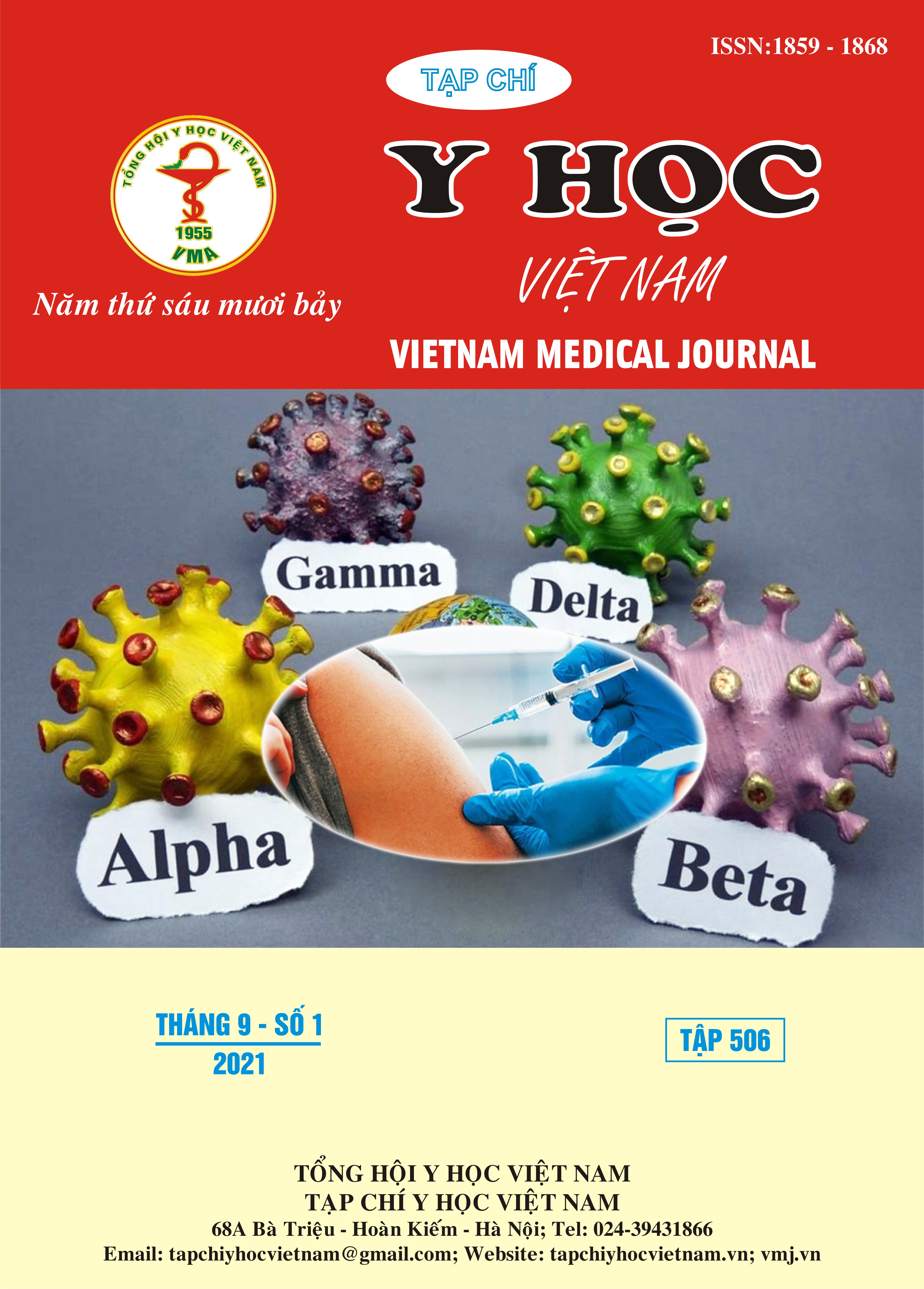VALUE OF CONTRAST ENHANCED SPECTRAL MAMMOGRAPHY IN DIAGNOSIS OF BREAST CANCER
Main Article Content
Abstract
Objectives: To evaluate the diagnostic values of contrast enhanced spectral mammography (CESM) in patient withbreast cancer compared with histopathological results. Methods: Retrospective, cross-sectional study. Results: Studying on 50 patients with breast tumor lesions undergoing CESM, the average age was 49.86 ± 12.06. Multi-lobular mass on CESM had a sensitivity of 71.4%, specificity of 68.2%, a positive predictive value of 74.1% and a negative predictive value of 65.2%, with an accuracy of 60%. The indistinct margin mass on CESM had a sensitivity of 53.6%, a specificity of 77.3%, a positive predictive value of 75% and a negative predictive value of 56.7%, with an accuracy of 64%. Invasive tumor on CESM X-ray had a sensitivity of 42.9%, a specificity of 95.5%, a positive predictive value of 92.3% and a negative predictive value of 56.8%, with an accuracy of 66%. The image of enhancement on CESM had a sensitivity of 89.3%, a specificity of 90.9%, a positive predictive value of 92.6% and a negative predictive value of 87%, with an accuracy of 90%. The BIRADS classification ≥ 4 on CESM has a sensitivity of 96.4%, a specificity of 22.7%, a positive predictive value of 61.4% and a negative predictive value of 83.3%, with an accuracy of 64%. Conclusion: Image of CESM effectively evaluates hypedense lesions, clearly showing the mass nature, less omission of lesions, thus valuable in diagnosing breast cancer with subjects with dense mammary glands.
Article Details
Keywords
Breast tumor, contrast enhanced spectral mammography
References
2. Dromain C., Balleyguier C., Adler G. et al (2009). Contrast-enhanced digital mammography. Eur J Radiol, 69(1), 34-42.
3. Sung J.S., Lebron L., Keating D. et al (2019). Performance of Dual-Energy Contrast-enhanced Digital Mammography for Screening Women at Increased Risk of Breast Cancer. 293(1), 81-88.
4. Spak D.A., Plaxco J.S., Santiago L. et al (2017). BI-RADS((R)) fifth edition: A summary of changes. Diagn Interv Imaging, 98(3), 179-190.
5. Nguyễn Văn Thắng (2013), Nghiên cứu giá trị chẩn đoán ung thư vú của chup X quang kết hợp siêu âm tuyến vú, Luận văn thạc sĩ y học, Đại học Y Hà Nội.
6. Costantini M., Belli P., Lombardi R. et al (2006). Characterization of solid breast masses: use of the sonographic breast imaging reporting and data system lexicon. J Ultrasound Med, 25(5), 649-659; quiz 661.
7. Berg W.A., Gutierrez L., NessAiver M.S. et al (2004). Diagnostic accuracy of mammography, clinical examination, US, and MR imaging in preoperative assessment of breast cancer. Radiology, 233(3), 830-849.


